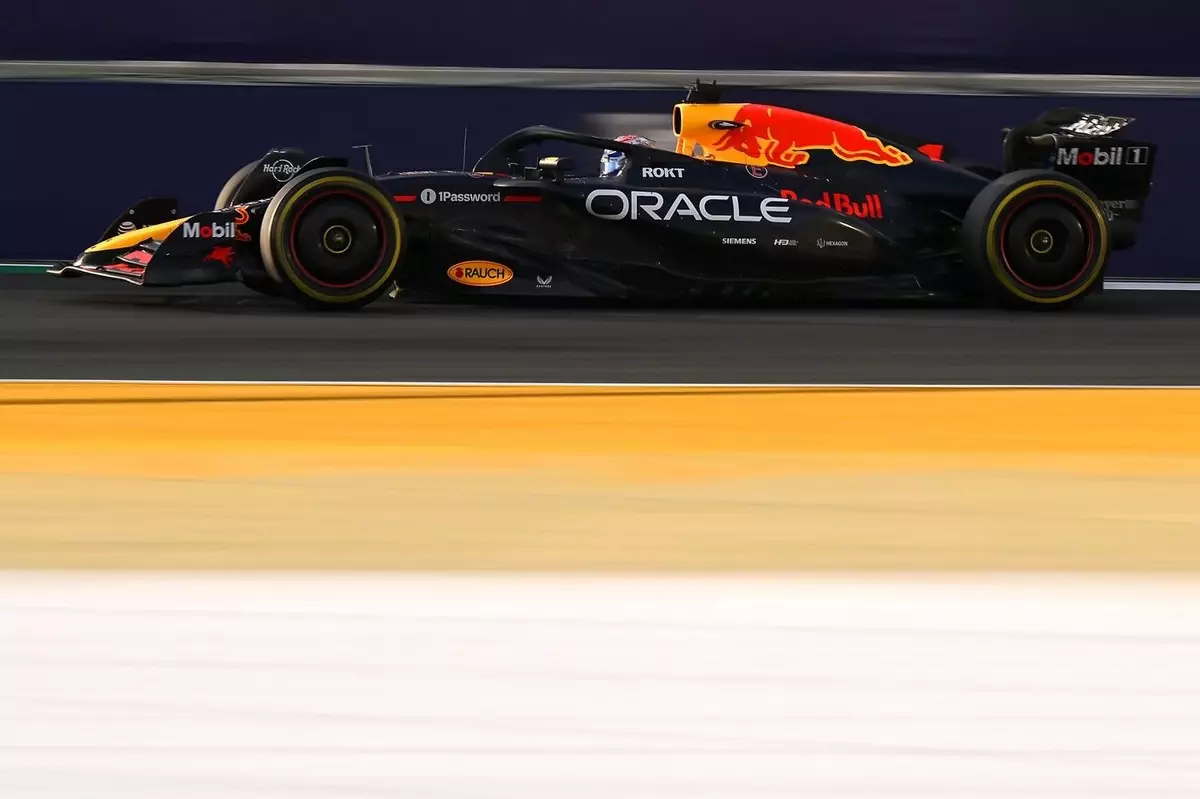In the high-octane world of Formula 1, the balance between speed and stability is often precarious. Red Bull Racing, long lauded as a titan of the sport, now finds itself entangled in a complex web of challenges that threaten its legacy. While the team’s performances may often appear glittering on the surface, an underlying turbulence suggests that all is not well within the organization. The recent media frenzy surrounding the team’s supposed “crisis talks” is emblematic of the tensions bubbling beneath, revealing a narrative that goes beyond mere racing figures: it reflects an internal struggle and search for identity in a rapidly evolving competitive environment.
The modern era of F1 is marked by a relentless pursuit of perfection, where every detail matters and every millisecond counts. Red Bull is currently embroiled in a battle not just against rival teams, but against its own technological limitations. This is not merely a sports story; it is a reflection of the demands of innovation within the fast-paced context of motorsport. As veteran team principal Christian Horner downplays the significance of meetings with engineering heads as “just discussions,” it begs the question: what defines a crisis in F1, and at what point do mere discussions evolve into something more serious?
The Challenge of Correlation
One of the most pressing issues facing Red Bull is a disconcerting disconnect between simulation results and actual on-track performance. This dissonance raises eyebrows and invites scrutiny, especially when the reigning world champion, Max Verstappen, finds himself grappling with an unpredictable beast known as the RB21. Observers have noted the instability of the car, which has led to mixed results, contrasting with its usual status as a podium contender. Critically, as the stats reflect a potential drop-off in performance, one cannot ignore the implications of such fluctuations in a hyper-competitive environment.
While some might dismiss these concerns as part of the ebb and flow of racing, a deeper examination reveals a more grave concern: consistent underperformance. Despite the gloss of occasional victories—like Verstappen’s triumph in Japan—the underlying issues persist, signaling that what is occasionally perceived as success can also be a harbinger of deeper systemic problems.
Horner’s analogy comparing the wind tunnel to “a relic of the Cold War” is more than mere exaggeration; it speaks volumes about Red Bull’s reliance on outdated technology in a field where rapid advancements define success. In a sport where aerodynamic efficiency often dictates the victor, the importance of modernizing facilities cannot be overemphasized. As the age-old adage goes, “You cannot improve what you do not measure,” and with technology fundamental to this measurement, the stakes are high.
The Importance of Adaptability
In an immediate sense, the pressure on the team is mounting. Other teams are developing significantly, and their ability to adapt and innovate may ultimately decide the outcomes of upcoming seasons. The need for a fresh perspective has never been more critical for Red Bull. As the sporting environment becomes increasingly challenging, complacency is a luxury that no competitive team can afford.
Addressing this existential crisis demands not just technological upgrades but also a shift in the team’s strategic approach. As innovative solutions are rolled out, the team must foster a culture that encourages open dialogue, creativity, and adaptability. The refusal to see the gathering clouds as anything other than harmless is a dangerous distraction—a mindset that could easily erode long-standing success.
A proactive approach necessitates not just a fixation on developing faster cars, but a holistic review of organizational strategy, engineering capabilities, and driver support. The stakes have escalated beyond merely winning races; we are in a realm where a team’s identity is forged not just from victories, but from its response to adversity.
Beyond the Paddock: Cultural Implications
Moreover, it is crucial to recognize the influence of culture within the team. A thriving environment that values collaboration and creative problem-solving may ultimately define the next chapter for Red Bull Racing. In the past, the team’s identity was characterized by audacity and innovation. If the team regains that ethos, it could overcome its current hurdles, re-embracing the dynamics that once propelled it to success.
As engineers and drivers convene, and with the world watching, Red Bull finds itself at a crossroads, teetering between legacy and reinvention. Stakeholders must acknowledge the magnitude of the challenge with open eyes, striving to ensure that the brand continues to resonate with its audience and not merely serves as a relic of its former glories.
The call to action is evident: Red Bull Racing must rise to the occasion, transforming its internal struggles into a vibrant narrative of resilience and revitalization. Ultimately, only through embracing these crises can they emerge not as a fading powerhouse, but as pioneers pushing the boundaries of what is possible in the world of motorsport.


Leave a Reply